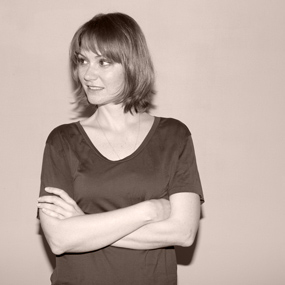Belgian collective Rotor gets first gallery show at Beirut’s Carwan Gallery
Material as Message
Fans of experimental architecture and design practice will be pleased to learn that fast-rising-star collective Rotor has a new show at Carwan Gallery in Beirut—Rotor’s first in a commercial gallery space. Founded in Brussels in 2005 by architects Maarten Giele, Tristan Boniver, and, Lionel Billiet, Rotor explores the theme of societal waste–and simultaneously, our shared values—through designs for public and private spaces, curated exhibitions, publications, and conferences. The group now includes nine members with interdisciplinary backgrounds in stage design, bioengineering, and history. Buzz-worthy projects to date include the Deconstruction exhibition of salvaged materials at the Athénée Léonie de Waha in Brussels (2015); the Behind the Green Door exhibition at the Oslo Triennale (2013); the masterplan for the docks of Ghent (2012); the OMA exhibition at London’s Barbican Gallery (2012); and the Ex Limbo installation at the Fondazione Prada in Milan (2011).
“By looking at what a society decides to discard, you can get an idea of what it aspires to,” is an often mentioned quotation from Rotor, and their latest exhibition at Carwan, purple, turquoise, pink (brown along the edges), carries on this line of investigation. Among the array of re-contextualized, found objects—more like material fragments that each tell the story of unfortunate waste and ruin—you’ll find, for instance, pastel-hued panels salvaged from fisherman huts that were bulldozed to make room for a new development in a seaside neighborhood of Beirut. Other standout pieces include leather skins created from cows that are bred for their meat and can no longer withstand the natural birth process, alongside discarded polyurethane drippings left over from the industrial production of boots.
We reached to the artists to learn more about this research-driven exhibition. Here’s what they had to say:
WC: Can you tell us about your process and the relationship between finding, re-contextualizing, and creating?
Rotor: Collecting specimens is a permanent process for us. It gets more intense when we are preparing an exhibition, but it's always ongoing. In general, we aim for pieces that shed light on a surprising situation, most often related to design in its broadest sense, and do so in a particularly eloquent way. A good exhibit seduces its audience into taking an interest. We try not to alter these objects and fragments, but of course placing them in a new context makes them act in a new way. In this sense, moving an object from one place to another is an act of creation.
WC: How do you select the stories you want to tell with your work?
Rotor: We follow our intuitions. It's a very personal process. But we rarely go looking specifically for objects that make this or that point. Rather we try to reveal. For me the process is much like how I imagine a photographer works. We force ourselves to keep our eyes open. We ask ourselves, “How can we show what is going on here to someone elsewhere. And most importantly, why would we want to do that?” In daily life, we are being bombarded with all kinds of information and messages. We all have developed methods for filtering this “unprocessable” quantity of information into something more manageable. Our working routines involve questioning that framework. Opening the door a bit more again.
WC: How would you characterize the general response to your work in recent years, particularly on the subject of waste? Are there particular responses that you feel most proud of? What do you hope the response will be in the near (or distant) future?
Rotor: I guess the best compliment you can get from your audience is consideration. An enlarged attention span is a very precious gift. Try browsing a newspaper. How long are you going to look at an image on page 5? Probably not more than a few seconds. We have the impression that our audience gives us a little bit more time. Maybe that means that we've earned some form of credibility, and that's a confidence we do not want to treat lightly.
But even more precious than this is when someone writes a thorough critical review. There are less and less of those. As a designer, I feel, these are the most interesting feedbacks you can have. It gives you a chance to understand how other people have understood your work. It points out the things you did not take into consideration. It's nice to count Instagram likes the night after an opening. But a serious review, now that's a treat!
WC: What’s next for you?
FB: Some long running projects are going to be finalized in the next year. Like our design for MAD, a new center for fashion and design in Brussels that we conceived together with architects V+. For the interiors, we worked on the question of the backdrop. How do you make a building that best helps to display the things that are going on in it? There's also a few new things coming up, of course, but it's too early to say much about these. In the last year, things have been going very fast for us. We need to think a little about what's next.
Carwan’s presentation of purple, turquoise, pink (brown along the edges) runs through November 14, 2015.
-
Text by
-
Wava Carpenter
After studying Design History, Wava has worn many hats in support of design culture: teaching design studies, curating exhibitions, overseeing commissions, organizing talks, writing articles—all of which informs her work now as Pamono’s Editor-in-Chief.
-

